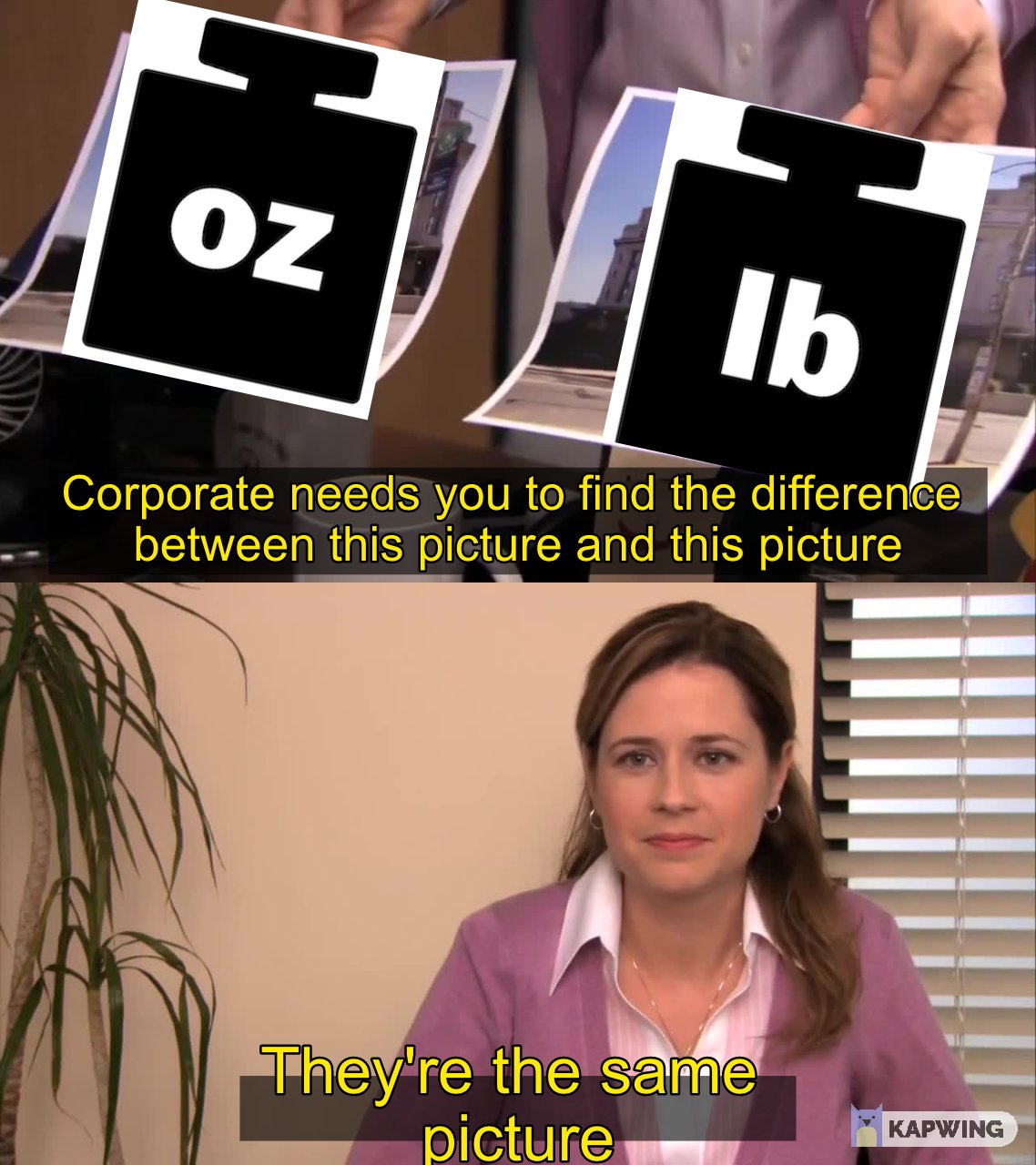Selling by weight for refill and zero waste bulk stores: Commonly asked questions
Author’s note: This content in this article is purely informational and derived using math; for any specific questions related to weighing and your business, your local weights and measures authority may be best suited to answer.
As the company that makes a popular smart tag weighing system for bulk refill stores, we have the pleasure of chatting with lots of future store owners in the planning stages of their business. We commonly receive general questions about selling by weight - should we price and sell by ounces or pounds? How big a difference does a scale’s precision make?
Our own interest was piqued after our friend Ryan from The Realm Refillery in Portland, OR sent us this photo as he was experimenting with pricing their store’s products in pounds vs. ounces and observed some curious differences in the total price:
This is the same item sitting on the scale, just with the scale’s units changed. The unit price was also converted without any real rounding ($20 per pound = $1.25 per ounce). Yet, there’s a 5 cent difference in the calculated price - what exactly is happening here? We decided to do some math and find out.
Pounds vs. ounces
Here’s a quiz: Do you get more precision if your scale is set to pounds or ounces?
A: Pounds
B: Ounces
C: It’s exactly the same
D: It depends on the scale
… or are they?
If you answered D, you’d be correct! Precision is determined by how many divisions are possible within a given scale’s capacity, and this could be different depending on the scale manufacturer.
That said, however, most commercial scales are set up with standard capacities and divisions across the various units of measurement (lbs, oz, kg, g) so the answer in practice might surprise you - let’s take a look!
A standard commercial grocery scale is typically manufactured with the following specifications for pounds and ounces:
30 lbs equals 480 oz exactly, so things should be pretty much the same when weighing in lbs and ounces, right? Well.. almost.
Let’s look at how many weights (divisions) are possible based on this scale’s specs:
Right away, we can see that based on how the scale is designed, there are 3000 possible displayed weights when in pounds, while at the same capacity there are only 2400 when the same scale is in oz. That’s a difference of 20%!
What’s happening here? The short answer is that 0.01 lbs actually equals 0.16 oz, but scale manufacturers have chosen to round the division for ounces to 0.2, thus lowering the number of divisions when the scale is in oz vs. lbs.
Given the above, does that mean all stores should switch to pounds?
We’ve observed that many stores, such as zero waste refill shops, apothecaries or spice shops, still choose to display and calculate prices based on oz instead of lbs. For example, presenting an expensive essential oil as $100 per lb may result in sticker shock, while $6.25 per oz may be perceived to be more affordable to the customer.
So back to price - how much of a difference might this make when selling by weight?
Let’s take a look at the chart below which illustrates how changes in the unit price increases the increments between possible total prices for both pounds and ounces:
For a product priced at $4 per pound, the total price will increment by $0.04 cents when the scale is in lbs and $0.05 cents when in oz - a difference of just a penny.
Ryan’s All Spice, meanwhile, is priced at $20 per pound, and we see that the total price increments by $0.20 in lbs and $0.25 while in oz - matching the $0.05 cent difference we saw in the image above.
For even very expensive weighted items selling for $50-100 per pound, the difference in price increments is $0.25 cents or less depending on which units the scale is using.
How do I choose the right capacity scale? What difference does it make?
We’ve illustrated above the potential differences in calculated prices based on switching a scale between lbs and oz. Now what about when it comes to scale capacity and division for different models of the same scale? What impact would having a higher precision scale for our spice section make?
Most commercial scale companies manufacture multiple models of the same scale based on different capacities. However, when moving up in capacity, one usually trades off precision. For example, here are three models a scale manufacturer might typically offer:
As we can see above, as the capacity increases, the resolution decreases. How much might this influence the total price of a given product?
Let’s take a look below at the same table, but this time instead of comparing price increments based on lbs vs. oz, let’s do so based on the scale’s precision:
For a product priced at $5.00 per lb, our low capacity / high precision scale moves the price in $0.01 cent increments while our high capacity / low precision one will move the price in $0.05 cent increments.
For very expensive items at $100 per pound, our high precision scale would result in the price calculating at $0.20 cent increments while our lower precision scale would do so at $1.00 increments.
To make this come to life a bit more, let’s say that you have 3 different scales in your store each with different capacities matching the specs. above. You take the same item and place it on your 3 different scales which might show up as follows:
At these weights, our Very Expensive Weighed Product at $100 per lb would come out to:
For our Very Expensive Product at $100 per pound, our resulting difference in calculated price across all 3 scales would be $0.40-$0.50 cents for a given line item.
Conclusion
Based on our calculations above, we see rather counterintuitively that many scales actually offer slightly more precision when in pounds vs. ounces. Similarly, we examined how different models of the same scale with various capacities and resolutions can ultimately impact the total calculated price, with these differences increasing with higher priced commodity products.
We encourage stores to examine their own weighed products and their prices and do their own calculations, similar to the above, to determine how changing units or using a scale with a different precision might affect their range of possible calculated prices. We also encourage stores to reach out to their own local Weights and Measures authority and confirm whether they require specific precisions based on the kinds of products being sold.









